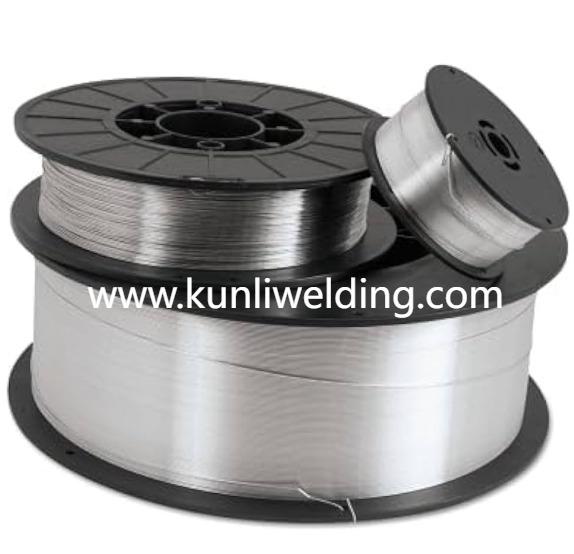Kunliwelding Tips On Wire Feed And Parameter Control For MIG And TIG

In busy workshops and in procurement conversations shaped by supply chain news, Aluminum Alloy Welding Wire Suppliers are being judged on both product quality and the clarity of their technical guidance. Choosing between TIG and MIG for aluminum assemblies involves more than process preference. It requires understanding how alloy behavior, feed characteristics and operator skill interact with project goals and current market pressures.
TIG welding is often praised for the level of control it gives the operator. With a stable arc and precise heat input, TIG works well when appearance and tight tolerances matter. It is commonly used for thinner sections and for joints where clean bead profile and minimal post finishing are priorities. TIG encourages careful preparation and disciplined shielding practice so the deposit reflects the intended alloy behavior. When supplier notes describe composition and suggested parameter windows, welders can transfer that guidance into repeatable practice with fewer trial runs.
MIG welding responds to different operational needs. For jobs that call for faster deposition and easier automation, MIG provides higher throughput and simpler filler addition. It pairs well with robotic or semi automated production lines and with thicker parts where higher deposition rate reduces cycle time. The trade off is that MIG requires consistent wire feed and clean feed geometry to avoid interruptions or spatter. Suppliers that control drawing quality and spool packing provide wires that feed smoothly which reduces machine adjustments and limits downtime.
Alloy chemistry shapes how the deposit performs in service and how forgiving it is at the arc. Silicon rich wires tend to flow readily and help create a smooth bead which benefits appearance sensitive work. Magnesium enriched fillers shift the balance toward tensile performance and fatigue resistance which is useful for structural and marine adjacent assemblies. Procurement teams and shop leaders should request composition notes and handling advice from their wire partner so they can match filler selection with service demands and with the chosen process.
Feedability and surface finish are practical concerns in production. A wire with uniform geometry and a clean surface reduces burn back events and stabilizes the feed profile in MIG equipment. In TIG operations where manual filler is common the focus shifts toward contamination control and consistent filler handling. Manufacturers that publish packing and unpacking recommendations help shops keep wire in ready to use condition and lower the chance of process related defects that add time to assembly or repair.
Operator skill and training remain central to sustainable outcomes. TIG requires a practiced hand to manage heat and to manipulate filler and torch motion for neat beads. MIG demands attention to travel speed contact tip setup and feeding consistency to limit spatter and deliver predictable bead form. Cross training teams so operators can switch between processes enhances flexibility when supply patterns change or when production priorities shift under market pressure.
Quality assurance benefits from traceability and documented supplier support. When a wire comes with batch level notes and suggested acceptance checks, quality teams can run targeted tests and isolate process or material issues quickly. That traceability shortens investigations and gives procurement teams evidence when they need to qualify alternative supplies under changing logistics conditions.
Sustainability and resilience are part of the modern procurement conversation. Wires produced with contamination control and packaged to limit environmental exposure reduce scrap and support cleaner recovery of metal at the end of life. Choosing suppliers who explain production control and handling practice aligns welding choices with broader operational goals.
When deciding between TIG and MIG for a given project, align process selection with part design finishing needs operator availability and supplier documentation. Run short representative trials under shop conditions and record parameter sets that reproduce desired outcomes. Ask suppliers for composition notes feed recommendations and suggested handling routines. That combination of practical trials and clear documentation reduces qualification time and supports steady production even when market conditions create new challenges.
For teams seeking product information and application guidance consult manufacturer technical materials and product notes that outline alloy behavior handling guidance and suggested uses. Additional product descriptions and technical support resources are available at www.kunliwelding.com which can help procurement and fabrication teams compare options and plan trials to match process choice with project requirements.
- Art
- Causes
- Crafts
- Dance
- Drinks
- Film
- Fitness
- Food
- Oyunlar
- Gardening
- Health
- Home
- Literature
- Music
- Networking
- Other
- Party
- Religion
- Shopping
- Sports
- Theater
- Wellness


